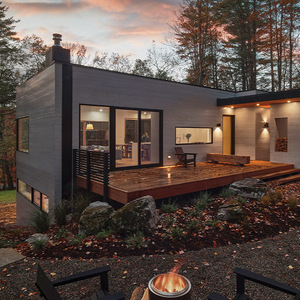Looking for commentary on this situation before I call the inspector, who I’ve been warned doesn’t understand the concept at hand (not sure I do either).
I have a rough framed house that is spray foamed. I sprayed the underside of the roof deck in a cathedral ceiling. I now want to frame some flat ceilings here and there and one of the situations that comes up is that I will be nailing a ledger onto a gable end wall. The entire gable wall is sprayed floor to ceiling.
In “normal” construction practice, there would be blocking installed in the stud cavities behind the ledger. But my cavities are filled with foam. All the rooms are to be drywalled.
I thought the blocking was to stop fire from running up a vertical cavity and then spreading into a horizontal cavity, like the attic. Someone else told me the blocking was to stop drafts for energy efficiency.
So what do you guys think? Is the foam enough or do I need to do something else like drywalling the entire gable end before I set the ledger?
MERC.



















Replies
Merc,
>>I thought the blocking was to stop fire from running up a vertical cavity and then spreading into a horizontal cavity, like the attic.
That is the purpose of Fire Blocking.
>>Someone else told me the blocking was to stop drafts for energy efficiency.
That is just a byproduct of Fire Blocking.
>>Flat ceilings here and there.
No possibility they will ever be used as floors? You should be OK with placing two lines of construction adhesive or other gap filler between the ledger and the studs/foam. You will have to check with the inspector on that.
Maybe someday they will be used as floors. Let in the ledger and fill the gaps behind it.
Again, it's up to your AHJ.
SamT
Thanks for info. Glad to hear I was basically right.
As for using the space as a floor - there won't be enough headroom above them to ever use as a floor. I'm at about 14' to the ridge from the existing floor, so if I frame a ceilng at 9' or so, you'll only get 4.5' to the ridge. And that tapers to zero over about a 10' span
MERC.
I thought the blocking was to stop fire from running up a vertical cavity and then spreading into a horizontal cavity, like the attic. Someone else told me the blocking was to stop drafts for energy efficiency
Sort of a combination of the two. Stopping air movement during a fire. Slowing it's spread to buy time.
So during a fire, air can't be pulled from one area to another. Attic fires can't pull air from the dwelling through utility penetrations or a ballon framed wall.
Our local inspectors are stringent about it. We don't need fire caulk, foam or regular caulk will do for penetrations.
Are the cavitys totally filled out to the ledger?
yes, the foam was cut flush with the face of the studs. The saw bows in sometimes so I might get a small gap. I could just run a bead of foam on the back side of the ledger before I put it up.
BTW, I guess my local inspector is tighter than yours because she had me running around putting fire caulk if every hole that an ant could crawl through.
MERC.
"BTW, I guess my local inspector is tighter than yours because she had me running around putting fire caulk if every hole that an ant could crawl through."Probably not needed at a lot of those places.Someplace, recenlty I read an article on the difference between fire blocking/draft block and and fire stopping.I *THINK* that those where the terms. The first referes to limiting the air flow and thus the volume that is one burnable area, exactly what you are talking here.The other is controlling the spread of fire in a fire rated assemblly.But I was still confused which was which after reading it and it indicated that many people, including inspectors, often confuse the two also.
Of course, whether this is OK is somewhat dependent on the fire rating of the foam. A foam that melts/shrinks at a relatively low (for a fire) temp could cause gaps to develop. And of course if the foam shrinks over time that could be a problem (though most current foam products claim this won't happen).
I had thought about that too. I have a call in to the guy who foamed the house to see what he thinks about it. He's pretty up on codes and such, so I think he'll have some useful information. Worse case I'll just have to drywall the gable under and above the ledger - no big deal just some extra work.
MERC
In some jurisdictions they likely require that all foam be rocked over, regardless of type. Simpler (for them) than verifying the fire-resistance of each different type of foam.
That's the funny part about this whole thing. I asked the inspector at my insulation inspection if she wanted to see drywall applied over the foam for fire protection. And she said something which didn't make any sense to me, but she basically said she didn't care if I covered it or not as long as the living spaces had it covered. She didn't care about the underside of the roof deck, only accessible from the attic, having exposed foam. I have a gas fired tankless water heater in my attic, so I would expect her to care, but she doesn't.
MERC.
DJ,
where are you located?
Chapel Hill, NC
I don't know much about foam. But I've never heard of it as being considered a fire block (not to be confused with a draft stop) perhaps someone can educate me. tell us what your foam guy says.
nevertheless, if it's not a fire stop, then the bit of extra work wether your inspector likes to see it there or not, too me is worth the extra sleep I'd get knowing that at least I did my part to give a family maybe the extra few minutes they needed to get out of a buring house.
By the way I'm not implying that you felt otherwise, but it did bug me what your inspector said.....so what if no one lives in the attic, the attic still leads to the rest of the house. anything that can slow down a fire is a good thing.
Edited 6/8/2005 3:11 am ET by nails2
Not to mention that roof fires are how fires spread from one house to another. That's why some places have banned roof coverings that can burn, like cedar shingles.
this stuff amazes me...in effect you have continuous draft/fire blocking from plate to roof, having foamed in the full stud bay...no air=no combustion...sounds like your inspector is anal and doen't know how to think, since she isn't looking for rock over the foam in the attic, when you have a potential ignition source there....
no wonder "can't see the forest for the trees" is a common saying!!!!
I talked to the foam guy. He said the foam does not support combustion, but does shrink away from open flame. So from that standpoint, he said he would like to see the gable walls drywalled. But he acknowledged it's going to be an interpretation of the code. He said the foam would cerainly qualify as a draft stop, but under the right conditions it could shrink and open up a channel for fire.
I'll try to catch the inspector this afternoon or tomorrow morning.
MERC.
why do you need to catch the inspector? what your foam guy says is good enough for me, interpretaion of the code or not. put up the drywall. had you known about the ceiling drops earlier, I got the impression that you would have installed fire blocking inbetween the stud cavaties earlier. so in your mind you already see the need for it.
I don't know why people get hung up on 'minimum code requirments' ...maybe I've been watching too much Holmes on Homes. (it's a Canadian show)
What the inspector wants is only one part of the equation. I'm not a minimalist by any means. I don't think I would have blocked the walls before spraying so I could minimize thermal bridging. Maybe I would have I don't know. I'd rather have the drywall coating, I just need to make sure that is going to be ok with the inspector. If she says "I don't care", then I will do the drywall. I just want to make sure I don't do the drywall and then get a hassle later.
However, the whole time I'm hanging that little bit of drywall to cover the tops of the gable walls, I'll be looking at 3,000 sq ft of foamed roof deck that isn't getting any drywall. And I'll be wondering...why am I covering these gable walls again...and not doing the underside of the roof deck....? I guess the reason is because if fire starts in the attic, nobody cares about the foam up there, but starting in living space and spreading rapidly to the attic is the another thing. Or even starting in the attic and spreading down the walls into living space.
MERC.
"I'm not a minimalist by any means."
I didn't really think that you were. if you were.. you wouldn't be here asking about it, you wouldn't care and would simply not bother.
I simply got the impression that you were waiting for the inspectors 'ok'. If your foam guy says he would like to see it. he's the guy that should know about the the qualifacations of the stuff (theorectically).
I just really can't see your inspector saying...sorry nope you gotta take it down.
"However, the whole time I'm hanging that little bit of drywall to cover the tops of the gable walls, I'll be looking at 3,000 sq ft of foamed roof deck that isn't getting any drywall"
as far as the roof deck goes, I have to make sure I'm following ....are you talking about the rafter cavaties? you only need fire stop to prevent the fire from spreading from one building sytem to another. ie from wall to floor/ceiling. but I think you already covered that earlier.. as well you just mentioned it, so you are on the right track in your thinking and have basically answered your own question.
regarding the mention of roof fires that was made, and the spreading of....that is another issue.
Edited 6/8/2005 1:07 pm ET by nails2
"are you talking about the rafter cavaties?"
Yes, I sprayed the underside of the roof deck. Now I will frame some dropped ceilings, so when I crawl around in the resulting attic, the insulation will be above you, not below. I'll essentially have a conditioned attic.
MERC.
The idea of the firestops in the walls is to slow the spread of a fire in the house. If the fire can be kept out of the attic it greatly extends the amount of time you have to vacate, and it makes it much more likely that the home can be saved.Once the fire spreads to the attic it's usually too late, so there's not much point in trying to protect the roof deck from flames..
"The idea of the firestops in the walls is to slow the spread of a fire in the house."
you said it...to me this is this takes precedence over the thermal issue. if he goes with the drywall, then he can address both issues.